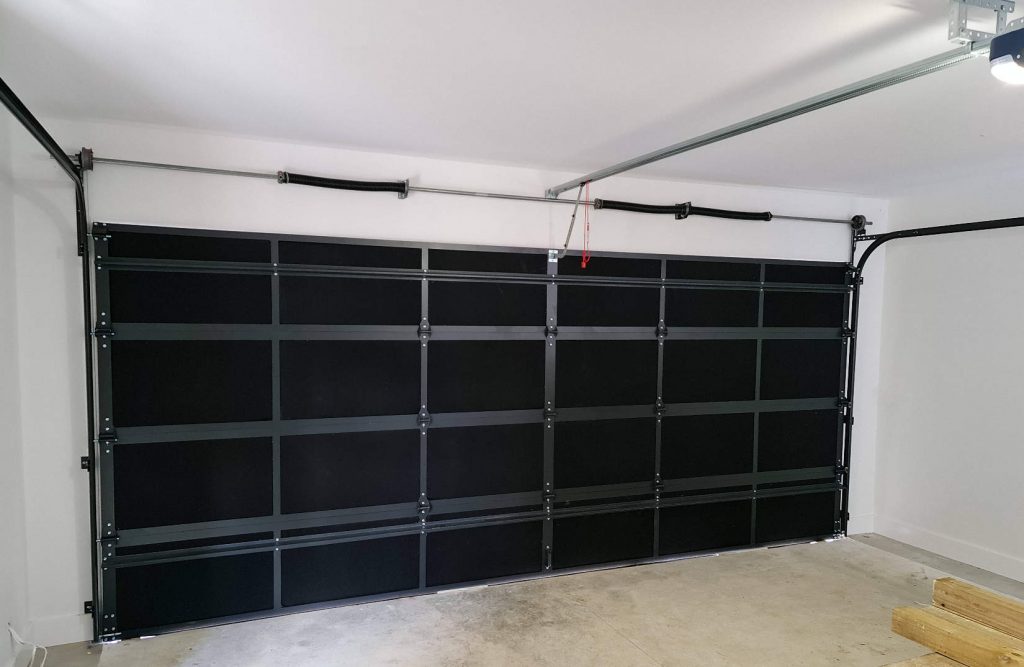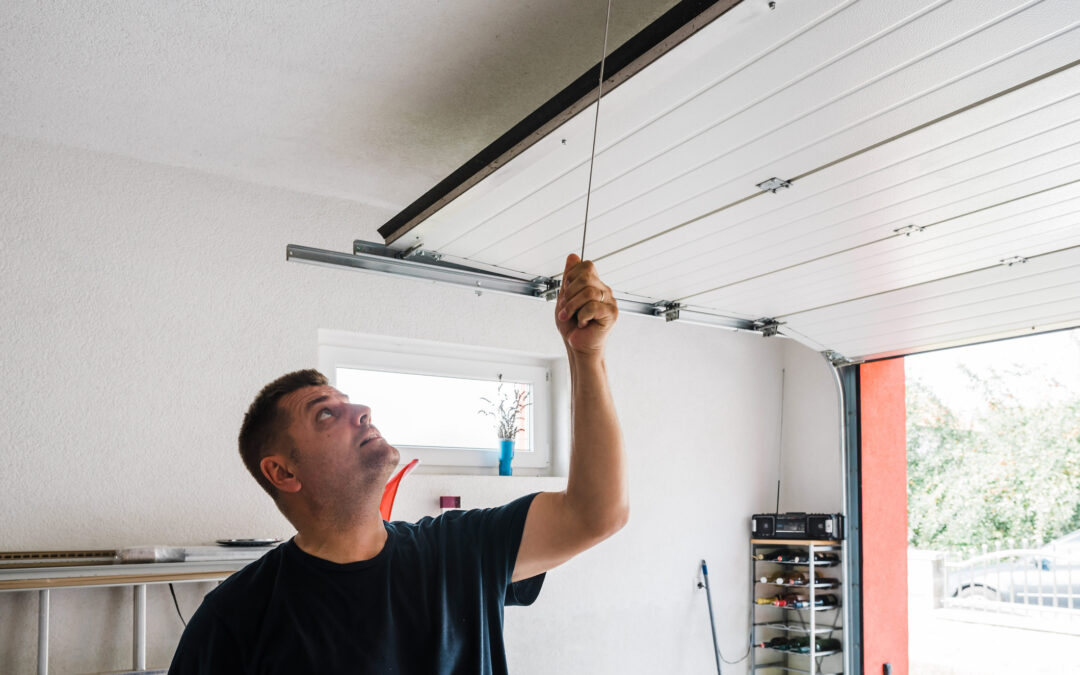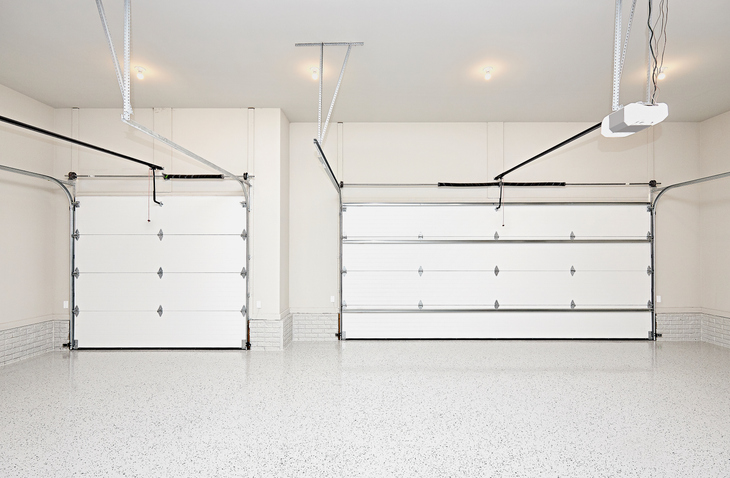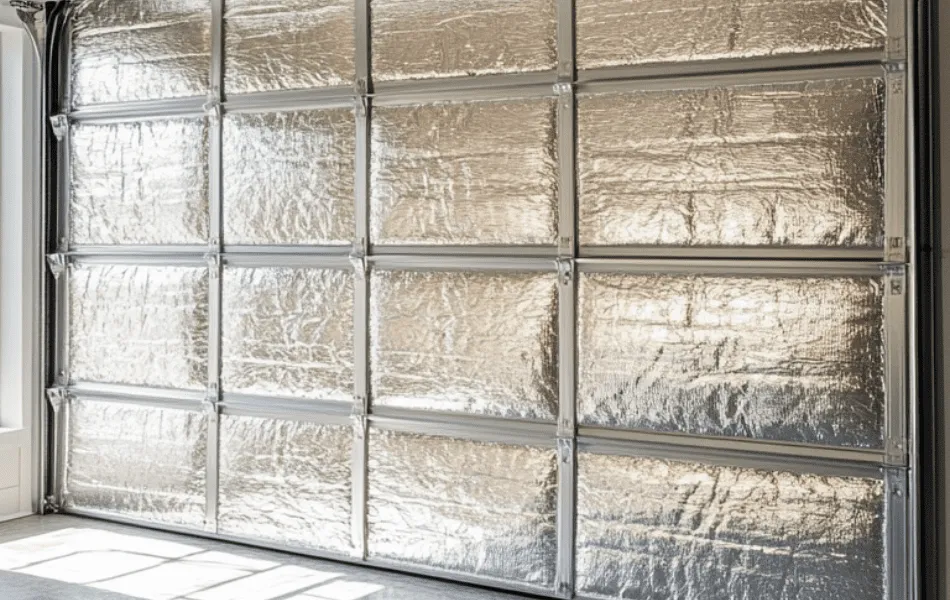Garage door insulation is a crucial aspect of maintaining the comfort and efficiency of your home. For many homeowners, the garage is an extension of their living space, serving as a workshop, storage area, or even a secondary entrance. Understanding the importance of insulating your garage door can make a big difference in your home’s overall energy efficiency and comfort.
So, what exactly is garage door insulation?

Understanding Garage Door Insulation
Garage door insulation is a process of adding a material layer to your garage door to prevent heat loss during winter and keep your garage cooler during summer. This added insulation helps to maintain a consistent temperature inside your garage, contributing to overall energy efficiency and reducing your utility bills.
Types of Garage Door Insulation
When considering insulation for your garage door, it’s essential to understand the different types available:
- Polystyrene Insulation: This type is similar to the material used in foam coffee cups. It’s lightweight, easy to handle, and provides reasonable insulation.
- Polyurethane Insulation: A denser and more efficient type, polyurethane is a foam injected between the layers of the garage door, offering superior insulation and strength.
- Reflective Insulation: These are typically reflective foil sheets that reflect heat rather than absorbing it. They’re useful for garages that get extremely hot during the summer.
Benefits of Garage Door Insulation
There are numerous advantages to insulate your garage door:
Energy Efficiency
Insulating your garage door can significantly improve your home’s energy efficiency by reducing the amount of heat that escapes from your garage in the winter and the heat that enters during the summer.
Improved Comfort
An insulated garage door contributes to a more consistent temperature, making it more comfortable to use as a workspace or for other activities.
Noise Reduction
Insulated doors can help reduce noise from outside, which is particularly beneficial if you live in a noisy neighborhood or use power tools in your garage.
How to Insulate Your Garage Door
Here’s a simple, step-by-step guide to insulating your garage door:
Materials Needed
- Insulation kits or insulation materials like polystyrene or polyurethane foam boards
- Utility knife
- Adhesive or double-sided tape
- Measuring tape
- Protective gloves
Step-by-Step Process
- Measure the Panels: Start by measuring the width and height of each garage door panel.
- Cut the Insulation: Using the utility knife, cut the insulation material to fit each panel.
- Attach the Insulation: Use adhesive or double-sided tape to attach the insulation to each panel.
- Secure the Edges: Make sure all edges are securely fixed to prevent any heat loss.
Learn more about garage door insulation.
Common Myths About Garage Door Insulation
There are several myths surrounding garage door insulation that need to be debunked:
Myth: Insulation Makes the Door Heavy
While it might seem logical, insulation does not significantly add weight to your garage door. Modern materials are designed to be lightweight yet effective.
Myth: Insulation is Expensive
Considering the energy savings and comfort improvements, insulating your garage door is a cost-effective investment in the long run.
Myth: Its Only Necessary in Cold Climates
Insulation is beneficial in both hot and cold climates, reducing the exchange of heat and maintaining a stable temperature inside the garage.
Choosing the Right Insulation
Selecting the appropriate insulation for your garage door depends on various factors, including your local climate and your specific needs.
Assessing Your Needs
Consider how you use your garage: Is it a workspace, a storage area, or just a place to park your car? The more you use it, the more you will benefit from higher-grade insulation.
Considering R-Value
The R-value measures the insulation’s effectiveness. A higher R-value indicates better insulation. Ensure you select an insulation material with the right R-value for your needs.
Maintenance Tips for Insulated Garage Doors
Maintaining your insulated garage door ensures it remains effective and lasts longer.
Regular Inspections
Conduct regular inspections to ensure the insulation hasnt deteriorated over time.
Cleaning the Door
Keeping your door clean helps maintain its insulation properties. Use mild detergent and water to clean it periodically.
Lubricating Moving Parts
Ensure the moving parts of the garage door mechanism are well-lubricated to prevent wear and tear, which can affect the insulation’s effectiveness.
Insulated vs non-insulated doors
Signs You Need to Insulate Your Garage Door
If youre wondering whether you need to insulate your garage door, look out for these signs:
Temperature Fluctuations
If you notice significant temperature changes inside your garage, its time to consider insulation.
Higher Energy Bills
An unexpected increase in your energy bills can indicate heat loss through your garage door.
Visible Gaps
If light or air is passing through gaps around your garage door, its a strong sign that you need insulation.
Cost of Garage Door Insulation
The cost of insulating your garage door can vary based on the type of insulation used and whether you opt for professional installation or a DIY approach.
DIY vs. Professional Installation
DIY projects can be more cost-effective, but professional installation ensures a perfect fit and optimal performance.
Material Costs
Polyurethane and reflective insulation materials tend to be more expensive but offer superior insulation compared to polystyrene.
Long-term Savings
The initial cost is offset over time by the savings in energy bills and the increased comfort of your garage space.
Environmental Impact of Insulating Your Garage Door
Insulating your garage door not only benefits your home but also has positive environmental implications:
Reduced Energy Consumption
Using less energy to heat or cool your garage helps reduce your carbon footprint.
Longer Life Span of HVAC Systems
When your home is well-insulated, your heating and cooling systems dont have to work as hard, which can extend their lifespan and reduce waste.
The Future of Garage Door Insulation
Innovations in insulation materials and technology continue to improve, making it easier and more effective to insulate your garage door.
Smart Insulation Solutions
Advancements in smart home technology mean we can expect more integrated and automated solutions for maintaining optimal garage temperatures.
Sustainable Materials
New, eco-friendly insulation materials are being developed, offering homeowners mor e sustainable options for their garage door insulation needs.
e sustainable options for their garage door insulation needs.
Conclusion
By understanding what is garage door insulation, homeowners can make informed decisions that enhance their living spaces, reduce energy bills, and contribute to a more sustainable environment.
FAQ
What is the best type of garage door insulation?
This depends on your specific needs, but polyurethane insulation generally offers the best performance.
Can I insulate my existing garage door?
Yes, you can add insulation to an existing door using kits or materials like foam boards or reflective insulation.
Will insulating my garage door reduce noise?
Yes, insulated garage doors can significantly reduce noise from outside, making your garage a quieter space.










